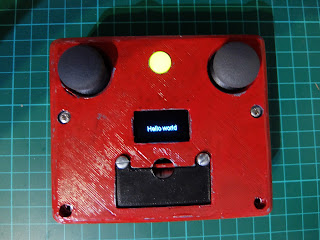Off switch

I want my robot to turn itself off when the batteries get low. Battery protector boards generally have a weakness: they are meant to be part of the battery. If you remove the battery from them, you need to charge the battery through them to reset them, so then you need an integrated charger in your robot. This would be convenient: to charge the robot by plugging it into a USB socket. I bought some TP4056 boards - the ones with out+/- as well is battery connectors, but it turns out they are made with clones of the TP4056 that aren't always safe . That link recommends testing them for at least one charge cycle before using them. That's more trouble than I want to go to right now. I also have one other two cell charger, that was quite a lot more expensive, but really the same risks apply. I'd decided when I designed roundbot with lithium batteries that it would be best to charge the batteries in a UK bought external charger. The point of the chassis design is to provide



